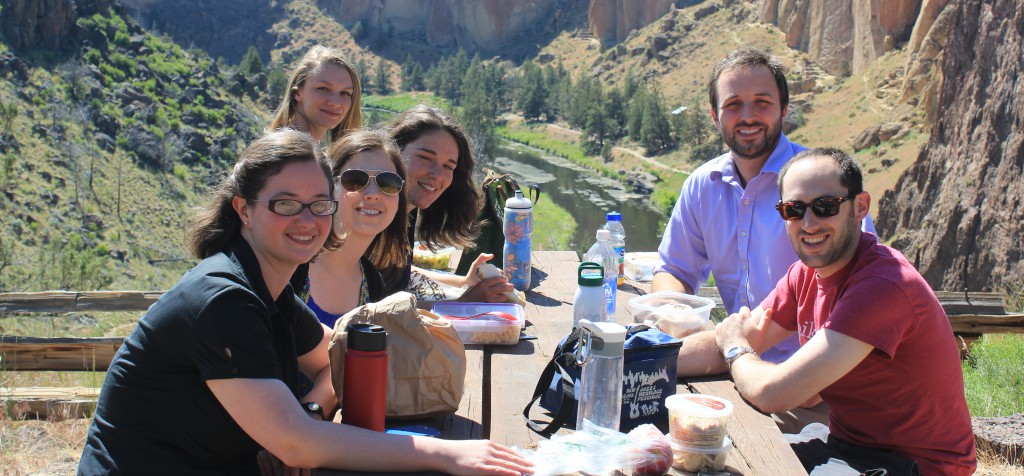
Team Madras (Madras Hazards Plan Integration) is made up of five first-year Community and Regional Planning graduate students enrolled in the Community Planning Workshop (CPW). The team’s project consists of taking Jefferson County’s Natural Hazard Mitigation Plan (NHMP) and integrating it with Madras’ comprehensive plan, the City’s regulatory planning document. For most of us on Team Madras, we came into the project knowing next to nothing about natural hazard planning. Some people devote their entire careers to hazard planning, and we were just taking on a six-month project. So, how were we to catch up, or at least begin to learn the basics of hazard planning and completing such an important project? This blog provides insight into some key lessons that our team learned about the project we have been working on.
1. Case Studies Can Provide a Huge Base of Knowledge
Aside from reading information from FEMA, and some pretty lengthy policy documents, our team found that the best way to learn about natural hazard planning was through case studies. Understanding what other cities have done to succeed (and fail) in the field of hazard mitigation, and more specifically, in the integration of the NHMP with the comprehensive plan, was extremely helpful for everyone on the team.
If we had just stuck to reading lengthy policy documents, we would have only had some abstract ideas as to what natural hazard planning was all about. The main lesson we learned about case studies is that by reading them, our team members were able to ground ourselves in natural hazard planning through concrete examples. After reading the case studies, our team began working on our project with a greater understanding of what we needed to accomplish moving forward.
2. Check In Often
While our team is working from Eugene, our client is three hours away in Madras and we need to make sure that we check in from time to time. As we create our revised natural hazards chapter, our client has been willing to review our goal and policy language, to ensure that what we write matches the standards and expectations that he has set for the final stages of the project.
Aside from our client, we have checked in with our Technical Advisory Committee (TAC) twice and had a conference call with Department of Land Conservation and Development (DLCD) representatives to discuss our hazard inventory, as well as our goal and policy language before it becomes finalized. The main lesson that our team learned was that by checking in frequently, we can make changes early in order to try and avoid any conflicts at the end of the project.
3. Public Participation is Key to Successful Deliverables
One of the most important aspects of creating our final deliverables has been the public participation input. We held a public forum and realized that some people hold strong opinions on matters that affect land use and regulations. In an attempt to receive the greatest amount of input as possible and keep the dialogue productive, we created a set-up of stations so that we could have one-on-one conversations with attendees. This allowed us to gather valuable input, start dialogues, and diffuse any potential air of conflict by addressing concerns upfront.
The resulting input that we received has directly informed the goals, policies, and implementation measures that we have included in our primary deliverable, the hazard mitigation chapter for the comprehensive plan. The input not only gave us a sense of what would be more or less popular with citizens, but also clued us into specific language that we should or should not avoid using. We learned that including public input and understanding the public’s point of view would create a stronger end product that wins more public support. While we will never win everyone’s support, by including public input, we can create a product that the public feels better about because their input has been included in our process.
Conclusion
Over the course of this twenty-week project Team Madras has learned several lessons in the process. Our hope is that in the future other cities can learn from our process as they proceed in comprehensive hazard mitigation planning.
 |
 |
About the Authors: Elizabeth Miller is a Community and Regional Planning student at the University of Oregon, and is additionally pursuing a certificate in Nonprofit Management. She is from Kalispell, Montana, and is a graduate of the University of Notre Dame with degrees in Fine Arts, Political Science, and Peace Studies. Emily Kettell is a first year Community and Regional Planning graduate student. She moved to Eugene from Chicago where she received her Bachelors degree from DePaul University, majoring in French and Public Policy, with a concentration in Environmental Studies.
